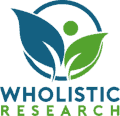Are ADHD and ADD the Same Thing?

Are ADHD and ADD the same thing?
This question has caused confusion for many people, as these terms are often used interchangeably. However, there are distinct differences between ADHD (Attention Deficit Hyperactivity Disorder) and ADD (Attention Deficit Disorder).
In this article, we will explore the factual data and shed light on the true nature of these conditions, helping to clear up any misunderstandings.
Whether you are personally affected by ADHD or ADD or simply seeking to expand your knowledge, we will provide valuable insights into these commonly misunderstood conditions.
Let’s delve into the world of ADHD and ADD to uncover the meaning behind the terminology.
Understanding ADHD and Its Symptoms
Attention Deficit Hyperactivity Disorder (ADHD) is a neurodevelopmental disorder that affects both children and adults. It is characterized by developmentally inappropriate levels of inattention, impulsivity, and hyperactivity. Understanding the basics of ADHD, its symptoms, and how it impacts individuals is crucial for proper diagnosis and management.
Inattention:
People with ADHD often struggle with inattention, which means they have difficulty keeping focus on tasks or activities. They may get easily distracted by external stimuli or have racing thoughts that make it challenging to concentrate.
Symptoms of inattention include:
- Becoming easily distracted by low-priority activities or external events that others tend to ignore.
- Having so many simultaneous thoughts that it’s difficult to follow just one.
- Difficulty paying attention or focusing, especially when reading or listening to others.
- Frequently daydreaming or “zoning out” without realizing it, even in the middle of a conversation.
- Struggling to complete tasks, even ones that seem simple.
- Tendency to overlook details, leading to errors or incomplete work.
- Poor listening skills, such as having a hard time remembering conversations and following directions.
- Getting quickly bored and seeking out new stimulating experiences.
Hyperactivity:
Hyperactivity refers to excess movement that is not fitting to the setting. While hyperactivity is often associated with children, adults with ADHD can also experience restlessness and a need for constant movement.
Symptoms of hyperactivity include:
- Feelings of inner restlessness, agitation, or racing thoughts.
- Getting bored easily and constantly craving excitement.
- Talking excessively and engaging in multiple activities at once.
It’s important to note that not all adults with ADHD exhibit prominent symptoms of hyperactivity. The presentation of ADHD can vary from person to person.
Impulsivity:
Impulsivity refers to hasty actions or decisions made without considering the consequences. Individuals with ADHD often struggle with inhibiting their behaviors and responses.
Symptoms of impulsivity include:
- Frequently interrupting others or talking over them.
- Blurting out thoughts that are rude or inappropriate without thinking.
- Acting recklessly or spontaneously without regard for consequences.
- Trouble behaving in socially appropriate ways, like sitting still during a long meeting.
Impact of ADHD
ADHD can have a significant impact on an individual’s life across various domains, including:
- Work and Career: Adults with ADHD may struggle to meet deadlines, follow workplace rules, and maintain a stable career. Disorganization and forgetfulness can hinder their job performance.
- Relationships: The symptoms of ADHD can affect personal relationships. Loved ones may become frustrated with forgetfulness, inattentiveness, or impulsivity, leading to strained relationships.
- Mental Health: Untreated ADHD can contribute to mental health issues such as anxiety and depression. Low self-esteem and feelings of frustration often accompany the challenges of managing ADHD symptoms.
- Physical Health: Neglecting important check-ups, skipping appointments, and forgetting to take medications can affect an individual’s physical health.
Are ADD and ADHD the same?
No, ADHD and ADD are not exactly the same thing. ADD, or Attention Deficit Disorder, is an old term that was used to describe individuals who have trouble focusing but are not hyperactive. On the other hand, ADHD, or Attention-Deficit Hyperactivity Disorder, is the current term that encompasses a broader range of symptoms, including inattention, hyperactivity, and impulsivity.
Attention-Deficit/Hyperactivity Disorder (ADHD) and Attention Deficit Disorder (ADD) are terms used to describe different forms of attention-related challenges in children and adults.
In 1994, doctors decided to use the term ADHD to encompass all forms of attention-related disorders, even if the person is not hyperactive. Now, there are three types of ADHD: inattentive type, hyperactive/impulsive type, and combined type.
ADD is now referred to as ADHD inattentive type, where a child has significant symptoms of inattention but does not exhibit hyperactivity or impulsivity.
The Differences Between ADHD and ADD
ADHD and ADD are two terms that are often used interchangeably to refer to attention deficit hyperactivity disorder.
However, there are some important differences between the two.
Here are the key distinctions:
- Terminology: The term ADD, which stands for attention deficit disorder, is an outdated term and is no longer officially used by healthcare professionals. The correct term now is ADHD, which stands for attention deficit hyperactivity disorder.
- Symptoms: The primary difference between ADHD and ADD lies in the presenting symptoms. ADHD is characterized by a combination of inattention, hyperactivity, and impulsivity. On the other hand, ADD (the inattentive subtype of ADHD) is characterized by difficulties sustaining attention and organizing tasks without the prominent presence of hyperactivity or impulsivity.
- Diagnosis: In terms of diagnosis, ADHD encompasses three subtypes: predominantly inattentive type, predominantly hyperactive-impulsive type, and combined type. The predominantly inattentive type is equivalent to what was previously referred to as ADD.
- Inattentive Symptoms: People with the predominantly inattentive type of ADHD (formerly known as ADD) may exhibit symptoms such as difficulty focusing on tasks, forgetfulness, being easily distracted, and trouble staying organized.
- Hyperactive-Impulsive Symptoms: People with the predominantly hyperactive-impulsive type of ADHD may exhibit symptoms such as restlessness, fidgeting, difficulty waiting their turn, interrupting others, and impulsive decision-making.
- Combined Type: The most common presentation of ADHD is the combined type, which includes both inattentive and hyperactive-impulsive symptoms.
- Diagnosis Criteria: To be diagnosed with ADHD, a person must meet specific criteria outlined in the Diagnostic and Statistical Manual of Mental Disorders (DSM). These criteria include experiencing symptoms in multiple settings (such as home, school, or work), impairment in social, school, or work functioning, and the symptoms not being better explained by another mental disorder.
- Gender Differences: ADHD symptoms can vary between genders. In general, males with ADHD may exhibit more hyperactive and impulsive behaviors, while females with ADHD may present with more internalized symptoms, such as daydreaming or difficulty with organization.
- Treatment: Treatment for ADHD and ADD may include a combination of medication, therapy, lifestyle changes, and support. The specific treatment approach will depend on the individual’s symptoms and needs.
Treatment Options for ADHD and ADD
When it comes to managing ADHD and ADD, there are a variety of treatment options available that can help individuals cope with their symptoms and improve their overall quality of life.
These treatment options range from medication to therapy and can be tailored to suit each individual’s specific needs. In this listicle, we will explore some of the most common and effective treatment options for ADHD and ADD.
- Nootropic Medication: Nootropics are medicines that are used to enhance cognitive function and improve mental performance. In the case of ADHD and ADD, certain nootropic medications can help improve attention, focus, and overall mental performance. These medications work by increasing the levels of neurotransmitters like dopamine and norepinephrine in the brain, which play a crucial role in maintaining focus and attention. Nootropics like Vyvamind, Noocube, Mind Lab Pro, and Modafinil offer safe and effective alternatives to Adderall that do not carry the same risk of addiction.
- Therapy: Therapy is another important treatment option for individuals with ADHD and ADD. Behavioral therapy, such as Cognitive-Behavioral Therapy (CBT), can help individuals learn strategies to manage their symptoms and improve their overall functioning. It can also help individuals develop coping mechanisms for dealing with challenges related to attention, impulsivity, and hyperactivity. Additionally, therapy can provide support and guidance for individuals and their families, helping them navigate the challenges associated with ADHD and ADD.
- Lifestyle Changes: Making certain lifestyle changes can also have a positive impact on managing ADHD and ADD symptoms. Regular exercise has been shown to improve concentration, focus, and overall cognitive function. Additionally, maintaining a healthy diet that is rich in nutrients can help support brain health and improve attention span. Getting enough quality sleep is also crucial for individuals with ADHD and ADD, as lack of sleep can exacerbate symptoms.
- Supportive Interventions: Alongside medication and therapy, there are various supportive interventions that can be beneficial for individuals with ADHD and ADD. These interventions may include the use of assistive technologies, such as timers, reminders, and organizational tools, to help individuals manage their time and stay organized. Creating a structured and predictable environment can also be helpful in reducing distractions and improving overall focus.
By working closely with healthcare professionals and exploring different treatment options, individuals with ADHD and ADD can find strategies that are effective in managing their symptoms and improving their overall functioning.
Conclusion
In conclusion, it is important to note that ADHD and ADD are indeed the same condition, with ADHD being the official name.
Throughout the years, the name has changed to reflect the growing understanding and research around this disorder. While some people may still use the term ADD, it is beneficial to use the most current terminology to avoid confusion.
Additionally, it is crucial to recognize that ADHD is not a disorder that needs to be cured, but rather neurodivergence with unique strengths and differences in how the brain functions.
Each person with ADHD is unique, and finding the right strategies and coping mechanisms is key to managing the traits associated with this condition. We hope that this information has provided clarity and insight into ADHD and ADD.
